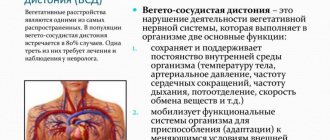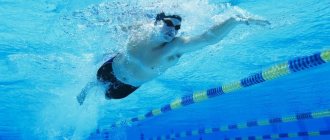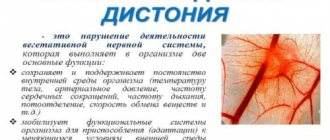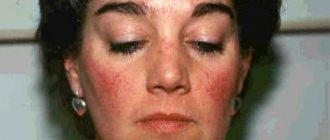The period of hormonal changes in adolescents is accompanied by immaturity of the nervous system and incomplete formation of the cerebral cortex. This is associated with the physiological lability of autonomic reactions, the discrepancy between the strength of the stimulus and the body’s response.
In children, VSD is most often provoked by hereditary changes or injuries received during childbirth. The main distinguishing feature of this pathology is the variety of striking clinical signs in the absence of objective evidence.
How does vegetative-vascular dystonia manifest in adolescents?
The diagnosis of VSD, its causes and symptoms in adolescents is not so obvious. Parents of a teenager usually rush to find out the cause of their child’s illness and immediately begin treatment, which can not only be useless, but also cause harm. But it is much easier to remove the “root” that underlies the symptoms of vegetative-vascular dystonia in adolescents
Other factors
For successful recovery from disorders, the emotional state of a teenager is important. Parents need to understand how dependent the child is on the psychological situation in the family. During treatment and after, conflict situations should not be allowed to arise not only between parents, but also with the child.
During puberty, adolescents are prone to stubbornness, contradiction and aggression. This behavior increases the negative symptoms of VSD. Often at this age many try cigarettes and alcohol. The toxic effects of these substances harm the growing organism.
During the holidays, a stay in a sanatorium will have a therapeutic effect. Treatment in specialized institutions will bring maximum results for VSD. In such institutions, the child will undergo a comprehensive examination, necessary tests, and consultations with specialists.
Therapeutic procedures will improve your health and get rid of diseases. Sanatoriums in the coastal zones of the southern regions of the country will bring a pronounced therapeutic effect. Regular sea bathing will have a beneficial effect on the child's health. When choosing an institution, it is advisable to better study the range of services and decide on the necessary methods. A properly selected set of procedures will restore a teenager’s health in the shortest possible time. A holiday in a sanatorium will have a positive effect if you have problems and will prevent the occurrence of other diseases.
VSD - pediatrician's advice:
On the way to growing up, a teenager faces many difficulties, including health problems. Intensive study and increased stress can become overwhelming for an intensively growing body and lead to diseases. Most often, the nervous and cardiovascular systems of the child suffer.
Increased attention to the teenager’s condition on the part of parents will allow him to notice negative deviations and symptoms in time and take the necessary measures to eliminate them.
Symptoms of teenage dystonia
It is considered normal if a teenager has a fast pulse. In particular, the steadily growing body of a teenager blurs the clinical picture. Vegetative-vascular dystonia in adolescents is determined by skin discoloration or the so-called “marble effect.” The teenager, it seems to him, does not have enough air.
Excessive functioning of the sebaceous and sweat glands, inherent in puberty, can contribute to the appearance of skin rashes and swelling. Although hormonal restructuring of the body in adolescents continues during adulthood. Sometimes jumps in body temperature are possible, regardless of external factors. A child can quickly lose weight, suddenly get sick and also recover quickly. A teenager, as a rule, is bothered by profuse acne. The teenager and his parents can be 100% sure of the presence of arrhythmia.
In fact, after passing the appropriate ECG tests, it turns out that the teenager’s heart is working “properly.” The reasons for this apparent cardiac “anomaly” in adolescents will be discussed further in the text.
Cause-and-effect relationships of VSD in adolescents
A significant sign of vegetative-vascular dystonia in adolescents can be pain in the heart and rapid heartbeat, reminiscent of arrhythmia. The cause of this symptom may not be the only one.
Here are just some of the factors in the development of imbalance in the functioning of the cardiovascular system:
- Overload of a teenager’s psyche due to the amount of information;
- Backlog in the school curriculum;
- Constant nervous tension in relationships with parents;
- Reaction to changes in food and household chemicals;
- Adaptation to the accelerating pace of life.
In the past, doctors also spoke of a genetic predisposition factor, but this only increases the likelihood of developing the disease in adolescents, and in no way acts as the main reason for the development of vegetative-vascular dystonia in adolescents.
The following categories of adolescents are at increased risk:
- Children with injuries received at birth;
- Prematurely born babies;
- Teenagers whose mothers suffered from certain infectious diseases during pregnancy;
- Adolescents with central nervous system damage;
- Anomalies of pregnancy and early childhood.
It is known that vegetative-vascular teenage dystonia is essentially one of the most common consequences of psychological shocks.
In families where a teenager is raised by only one parent, or when parents suffer from alcohol and drug addiction, the teenager is more susceptible to emotional breakdowns and the appearance of vegetative-vascular dystonia. If mom and dad live far away and go abroad to work, the risk that the child will be plagued by painful symptoms of VSD throughout adolescence increases tenfold. All kinds of allergies, the poor environment in the region also increase the risk, especially against the background of overload, a diet “poor” in terms of vitamins and microelements and rapid hormonal changes in adolescents.
Causes
The syndrome develops gradually under the influence of a number of negative factors. Pediatricians believe that the main reason is excessive stress on the central nervous and vascular systems.
There is a group of common negative factors that contribute to the development of signs of VSD:
- congenital predisposition;
- hormonal fluctuations, especially in girls and women;
- serious stress, nervous shock;
- excessive physical or intellectual stress;
- the presence of bad habits, smoking has a particularly negative effect;
- sedentary lifestyle;
- bad ecology;
- suffered severe infectious diseases.
The specific cause determines from which organ the pain and disturbing symptoms will predominate.
The reason is that harmful factors have a predominant effect on some part of the body. For example, negative emotions affect the heart, intellectual overload affects the brain.
How to diagnose the disease? Causes and symptoms
The uncertainty of the cause of the appearance of vegetative-vascular dystonia in adolescents is complicated by the fact that children perceive the signs and symptoms of the disease very subjectively. Often their complaints are sometimes very far from the actual development of the pathology. When a teenager has a headache, he may simultaneously complain of abdominal pain, and vice versa.
Often, only a complete medical examination can contribute to an accurate diagnosis. But is this disease treatable in teenage children?
Is it difficult to treat vegetative-vascular dystonia in adolescents?
If a child, at the age of 16, has passed all the necessary examinations, and doctors have determined the causes and symptoms of vegetative-vascular dystonia, ruled out heart disease and other more serious diseases, then a classification of the manifestations and signs of vegetative-vascular dystonia in adolescents is carried out. Parents should remember that the main cure for the unpleasant manifestations of vegetative-vascular dystonia in adolescents is a healthy atmosphere in the family.
No treatment will be successful if the teenager is very sensitive to stressful situations. He must be protected from such “experience”. There should be peace and love in the family and parents should refrain from any emotional stress.
Teenagers should definitely have a daily plan set by their parents to balance physical activity with rest. This is necessary to maintain a positive attitude. Moreover, it is the attitude that plays the main role in the fight against the manifestation of dystonia. It is better to eliminate the symptoms of vegetative-vascular dystonia without resorting to pharmacological treatment methods. Traditional methods should not be abandoned. Medicines are taken only on the recommendation of a specialist.
Teenage lifestyle
During treatment, special attention should be paid to the child’s daily routine and activities.
A teenager needs eight hours of sleep. This duration allows the body to rest and recover for a new day. Frequent or persistent sleep deprivation worsens symptoms with increasing intensity.
During the day, alternate between physical activity, mental activity and rest. This approach will avoid overwork and speed up the disappearance of VSD.
Physical education and sports keep the body in good shape and stimulate blood circulation. Cardio exercises, running, table tennis, tennis, and swimming are suitable. It is better to postpone vigorous types of exercise during treatment.
Healthy foods rich in nutrients, vitamins and minerals will provide everything the actively growing body needs and speed up recovery. When creating a menu, the best choice is simple foods high in quality protein. Fresh vegetables and fruits will saturate the body with useful substances and normalize digestion.
Healthy lifestyle
Procedures for VSD
In the treatment of vegetative-vascular dystonia, the following procedures are recommended:
- Therapeutic massages;
- Maintenance therapy (including acupuncture);
- Physiotherapy;
- Water therapy.
In the process of treating vegetative-vascular dystonia, it is advisable to use drugs with a sedative effect that calm the cardiovascular system, while simultaneously stimulating the nerve centers.
Recommended herbs for vegetative-vascular dystonia in adolescents:
- Siberian ginseng;
- Thistle;
- Mint, lemon balm.
If such “soft” treatment does not help, turn to the pharmaceutical industry. Make sure you take the medicine as directed. Pay attention to the dosage prescribed by your doctor. You should not overuse it, because the desired volume is achieved gradually. If a teenager has a chronic source of infection, doctors try to suppress this source of inflammation.
Vitamin therapy comes to the fore as a prevention of vegetative-vascular dystonia. For adolescents suffering from vegetative-vascular dystonia, vitamins should be shown on a regular basis, at least once every six months, especially in the off-season.
It is advisable to abstain from all kinds of analgesics. They are addictive and kill the immune system. The body stops fighting diseases on its own and waits for the next dose of painkillers.
How to deal with the symptoms of VSD?
A teenager needs to sleep at least 8 hours a day. As parents, you must adhere to the following requirements for your growing child:
- Regular walks in the fresh air;
- Load limitation;
- Reducing time spent using a computer and watching TV;
- Restriction on mobile phone;
- Moderate exercise;
- Balanced diet;
- Psychotherapy;
- Electrophoresis;
- Therapeutic massage;
- Vitamins and herbal medicine.
Treatment
Treatment of VSD during puberty depends on the individual severity of symptoms and severity. Usually the doctor begins treatment with non-drug methods.
These include:
- Maintaining a daily routine. A teenager should sleep 8-9 hours. During the daytime, it is necessary to organize an alternation of work (study) and rest. Mental fatigue negatively affects the state of the nervous system.
Computer games and watching TV programs also belong to psycho-emotional stress, and not to relaxation. Parents should monitor and limit the time their teenagers spend watching TV and computers.
- Physical activity and sports have a good effect on the general condition. They should be regular, but moderate, not causing fatigue. Swimming, cycling, ball games, running, table tennis, walking in the fresh air in the forest or park are suitable.
- Rational nutrition, balanced in the content of carbohydrates, fats, and proteins. Preference is given to vegetable rather than animal fats. Spicy dishes, smoked foods, and pickles should be kept to a minimum. The consumption of carbonated drinks, coffee, and strong tea should also be limited.
It is advisable to ensure the consumption of foods rich in microelements. Dried fruits, beets, potatoes, carrots, tomatoes, beans, and raisins contain potassium. Nuts, carrots, oatmeal and buckwheat porridge are rich in magnesium.
- Physiotherapeutic procedures have a positive effect:
- medicinal baths (pearl, with sea salt, pine);
- phototherapy;
- cold and hot shower;
- massage of the head, collar area;
- reflexology;
- magnetotherapy.
- Herbal medicine: decoctions of rose hips, motherwort, lemon balm. For low blood pressure, it is useful to use ginseng, lemongrass, and aralia.
- The psychological climate in the family and the nature of communication with parents are very important. In some cases, consultation with a psychologist may be appropriate.
If there is no effect from non-drug treatment and physiotherapy, the doctor selects a course of medications on an individual basis.
The following drugs are used:
- sedatives: valerian, glycine, glutamic acid, etc.;
- vitamin and mineral complexes;
- To normalize the function of the nervous system, nootropics are prescribed: Piracetam, Pantogam, etc.
- drugs to normalize blood pressure;
- in severe cases, antidepressants are prescribed.
Attention! Only a doctor can choose medications and determine the duration of drug treatment!
Which specialist should I contact?
Before making a diagnosis of “vegetative-vascular dystonia in adolescents,” it is necessary to exclude more serious diseases. You should consult a therapist, gynecologist, or cardiologist. The nature of the appearance of air shortage, i.e. shortness of breath, will be checked by an endocrinologist. You will need to do an ultrasound of the thyroid gland.
Each of the recommended specialists will determine what tests the teenager will need to undergo. But a general blood test will definitely need to be taken. A detailed analysis may be needed. If the above specialists write “Healthy” on the teenager’s card, then the final diagnosis will be made by a psychotherapist.
You should not be critical of this specialist, because he is the one who specializes in the autonomic system of the body. A psychotherapist has nothing to do with psychiatry. While a psychiatrist treats mental disorders, a psychotherapist deals with independent symptoms of psychological problems. He can determine the cause of unreasonable shortness of breath in a teenager. But the cause of shortness of breath can be even a banal overload at school or a quarrel between parents at home.
The instability of a teenager’s psyche and emotions can provoke more serious problems. Headache and increased heart rate may not be a sign of arrhythmia or brain cancer. After carefully conducted examinations, it may be discovered that the teenager, contrary to fears and assumptions, is absolutely healthy. Then you have a direct path to a psychotherapist.
After the causes and symptoms of vegetative-vascular dystonia have been confirmed by a specialist, in the future, for vegetative-vascular dystonia in adolescents, the following may be prescribed: antihypertensive therapy - drugs to lower blood pressure, to improve blood circulation - adrenergic blockers; antioxidants – to support the nervous system; tranquilizers and sedative antidepressants - to relieve anxiety and depression.
Neurocirculatory dystonia, autonomic dysfunction - these terminologies were used exclusively in the post-Soviet space and are associated exclusively as relics of the Soviet past. According to most reviews, after the end of the “problem” age, the manifestations of dystonia sharply disappear in a teenager.
Diagnostics
Real stories from site readers: “My name is Alexandra, I’m 38 years old. I want to tell my story about how I cured osteochondrosis and hernia. Finally, I was able to overcome this unbearable pain in my lower back. I lead an active lifestyle, live and enjoy every moment! A few months ago I got a cramp at the dacha; a sharp pain in my lower back didn’t allow me to move, I couldn’t even walk. The doctor at the hospital diagnosed osteochondrosis of the lumbar spine, herniated discs L3-L4. He prescribed some medications, but they did not help, the pain was unbearable. They called an ambulance, they put a blockade and hinted at an operation, I kept thinking about this, that I would turn out to be a burden for the family... Everything changed when my daughter gave me an article to read on the Internet. You can’t imagine how grateful I am to her for this! What I learned from the article literally pulled me out of my wheelchair! In recent months I have started to move more; in the spring and summer I go to the dacha every day. Who wants to live a long and energetic life without osteochondrosis, take 5 minutes and read this article.” Read the article»
It is difficult to accurately diagnose when the symptoms of the syndrome have a clinical picture of various diseases.
Editorial team: “ We strongly recommend that you familiarize yourself with the little-known method of home treatment for any diseases of the back and joints , recommended by leading German and Israeli doctors.” MUST READ"
To exclude organic pathology, it is necessary to undergo an initial consultation with a cardiologist, neurologist, endocrinologist, and seek help from a psychotherapist. When diagnosing VSD, it is necessary to determine autonomic reactions and establish indicators of the reactivity of the syndrome.










